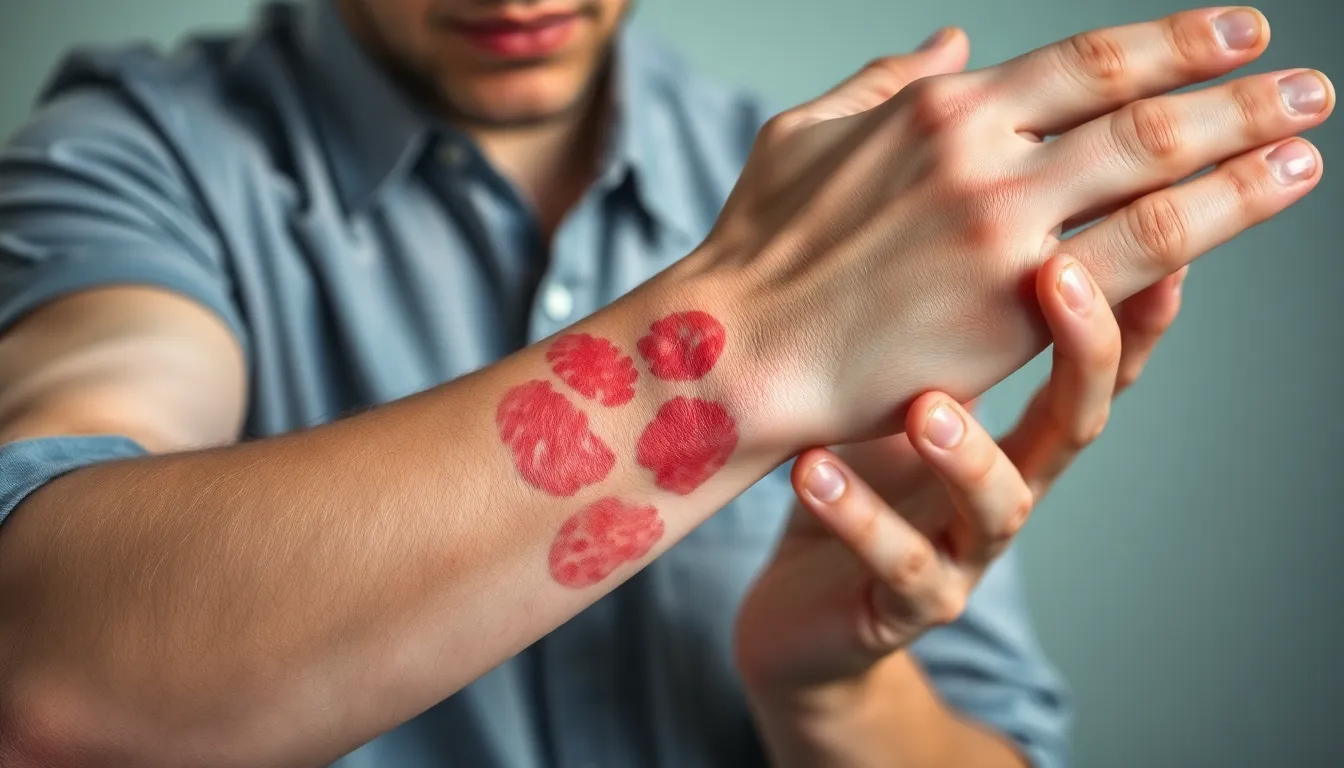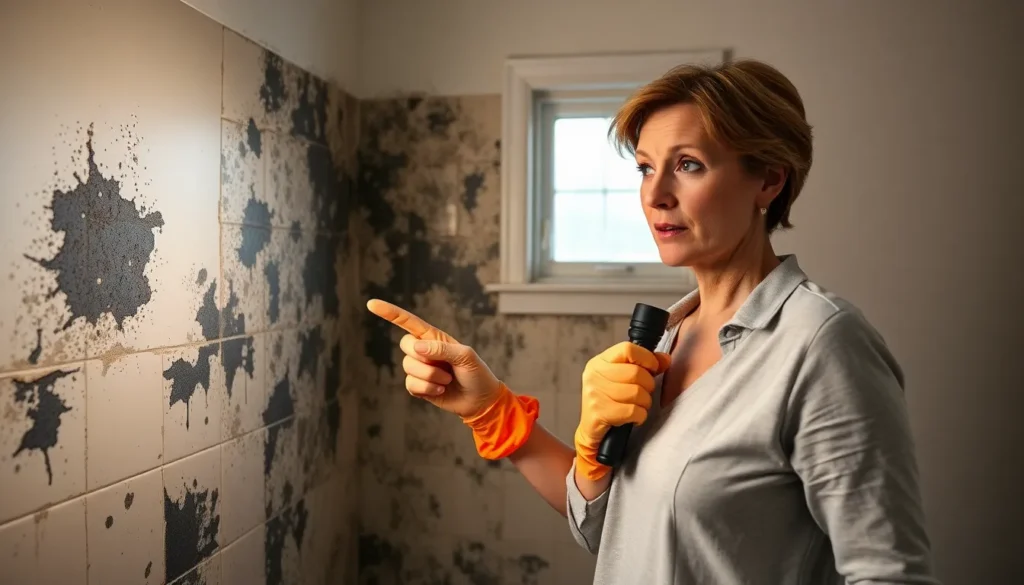When it comes to home sweet home, nothing should spoil the cozy vibe—not even a sneaky patch of black mold. This uninvited guest can wreak havoc not just on walls but also on skin, leading to rashes that might make anyone feel like they’ve auditioned for a horror movie. If you’ve noticed an itchy rash making an appearance, it’s time to dig deeper.
Understanding the symptoms of skin rashes caused by black mold isn’t just about scratching the surface. It’s about taking charge of your health and reclaiming your space. From redness to irritation, these symptoms can signal that mold is more than just a nuisance—it’s a potential health hazard. So let’s unravel the mystery behind those pesky rashes and arm readers with the knowledge they need to protect themselves and their homes.
Table of Contents
ToggleUnderstanding Black Mold
Black mold, or Stachybotrys chartarum, thrives in damp areas like bathrooms and basements. This type of mold can produce mycotoxins that affect health. Individuals exposed to black mold may experience various symptoms, particularly skin rashes. Symptoms often include redness, swelling, and itching. These reactions can arise from direct contact or inhalation of mold spores.
Environmental conditions significantly influence mold growth. High humidity levels, leaks, or poor ventilation facilitate mold expansion. Prolonged exposure to black mold may lead to respiratory issues, fatigue, and skin irritations. Some people may develop allergic reactions, resulting in persistent rashes.
Signs of a mold problem often include black spots or patches on walls and ceilings. Mold develops easily on organic materials like wood, drywall, and carpet. Recognizing these signs helps individuals identify potential health risks.
Treatment of skin rashes from mold exposure typically involves topical medications. Over-the-counter corticosteroids can reduce inflammation and itching. In some cases, professional medical care is necessary, particularly for severe reactions. Removing the mold source also plays a crucial role in preventing recurrence.
Awareness and proactive measures are essential for maintaining a healthy living environment. Regular inspections for mold growth should become a routine practice. Effective mold control includes managing moisture through proper ventilation and utilizing dehumidifiers when needed.
Taking these steps significantly minimizes the risk of skin rashes and other health complications associated with black mold exposure.
Common Symptoms of Black Mold Exposure

Recognizing symptoms of black mold exposure is crucial for early intervention. Skin rashes often present some of the most noticeable indicators of mold-related health issues.
Skin Rash Characteristics
Skin rashes frequently manifest as red, itchy patches, which can appear anywhere on the body. Individuals may notice swelling or hives alongside irritation. Moisture and warmth enhance these reactions, making affected areas even more uncomfortable. Direct contact with black mold can lead to allergic dermatitis, accentuating existing skin conditions. Contact dermatitis might arise when an individual touches contaminated surfaces or materials. Some may experience blistering and peeling skin, which indicates a more severe response to mold exposure.
Other Physical Symptoms
Other physical symptoms include respiratory issues like coughing and sneezing, which often accompany skin rashes. Allergic reactions frequently lead to nasal congestion or sinus pressure. In some cases, fatigue or headaches can stem from prolonged exposure to mold spores. These symptoms occur alongside skin reactions, making awareness vital. Watery eyes and throat irritation may become prevalent, affecting overall comfort. If mold exposure continues, individuals may experience worsened allergy symptoms, impacting daily activities.
Identifying Skin Rash Related to Black Mold
Identifying skin rashes linked to black mold exposure requires attention to specific characteristics. Skin reactions often present as red, itchy patches that may develop into more severe forms.
Visual Identification
Visual identification of a skin rash associated with black mold exposure involves recognizing distinct features. Redness typically appears around the rash site, while swelling may accompany it. Hives can develop in response to mold, indicating an allergic reaction. Notably, the rash often worsens in humid, warm environments. Blistering or peeling skin can indicate a more pronounced reaction to mold spores. Awareness of these elements aids in timely recognition and response.
Symptoms Comparison
Comparing symptoms related to black mold exposure helps identify relevant health issues. Skin rashes often precede respiratory problems, although they can occur simultaneously. Red, itchy patches signal initial contact, whereas fatigue and headaches indicate ongoing exposure. Coughing and sneezing arise from inhaling mold spores, further complicating the clinical picture. Allergic dermatitis, a common response to mold, differs from general irritation by its intensity. Recognizing these differences enables better management and preventive measures.
Treatment Options for Skin Rash
Effective treatment for skin rashes linked to black mold involves immediate action to alleviate symptoms and address the mold source. Topical medications and over-the-counter remedies often provide relief for mild cases.
Over-the-Counter Remedies
Common over-the-counter treatments include hydrocortisone cream and calamine lotion. These products reduce inflammation and soothe itching. Oral antihistamines like diphenhydramine can also help manage allergic reactions. Individuals should apply these remedies as directed for maximum effectiveness. Avoid using products with fragrances or harsh chemicals, as these can irritate the skin further.
When to Seek Professional Help
Persistent or severe rashes need professional evaluation. Symptoms such as blistering, peeling, or widespread irritation indicate a more serious reaction. A healthcare provider can prescribe stronger topical steroids or oral medications based on individual needs. Seeking medical advice becomes crucial if rashes don’t improve within a few days or worsen over time. Additionally, addressing any underlying mold issues is essential for long-term health and safety.
Black mold poses significant health risks that shouldn’t be overlooked. Recognizing skin rashes as a symptom of exposure is crucial for early intervention. The presence of redness swelling and itching can indicate a serious underlying issue. It’s essential for individuals to remain vigilant about their living environments particularly in areas prone to moisture.
Taking proactive steps to manage humidity and address leaks can significantly reduce mold growth. When skin rashes appear immediate treatment is important to alleviate discomfort and prevent further complications. Consulting healthcare professionals for persistent symptoms ensures proper care and management. Ultimately maintaining a mold-free environment is key to safeguarding health and well-being.









